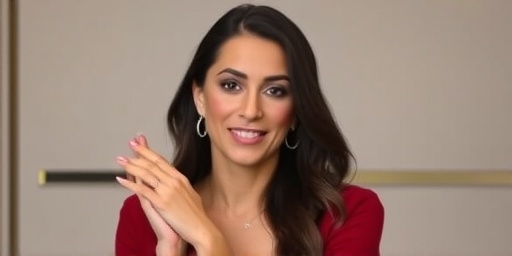The Moment Beatrice Balaj Said No to a 10-Carat Diamond
In a twist that has captivated millions, influencer Beatrice Balaj stunned her followers by rejecting a dazzling 10-carat yellow diamond engagement ring during a lavish proposal in Paris last weekend. While she joyfully accepted her fiancé’s hand in marriage, Balaj’s candid admission that the ring ‘just didn’t feel like me’ has exploded across social media, turning a personal milestone into a global conversation about authenticity in romance. The video of the moment, shared on her Instagram account with over 2 million followers, has amassed more than 15 million views in just 48 hours, propelling the story to viral status and drawing reactions from celebrities, jewelers, and everyday users alike.
- The Moment Beatrice Balaj Said No to a 10-Carat Diamond
- Beatrice Balaj‘s Journey: Building an Empire on Authenticity
- Social Media Erupts: From Praise to Backlash in the Viral Frenzy
- Decoding Engagement Ring Traditions: Size, Symbolism, and Shifting Norms
- Influencer Impact: How Balaj’s Choice Could Redefine Proposal Culture
Balaj, known for her lifestyle and fashion content, documented the proposal in real-time, capturing the Eiffel Tower backdrop and her fiancé, tech entrepreneur Alex Rivera, dropping to one knee with the oversized gem in hand. But as the ring was presented, Balaj’s face lit up not with the expected awe, but with a thoughtful pause. ‘I love you more than words, but this ring? It’s beautiful, but it’s not my vibe,’ she later explained in a follow-up post. This unfiltered honesty has resonated deeply, challenging the long-held notion that bigger is always better when it comes to engagement rings.
The incident highlights a growing trend among influencers who prioritize personal expression over extravagance. According to a recent survey by The Knot, a wedding planning resource, 62% of millennials and Gen Z respondents say they’d prefer a ring that reflects their unique style over one valued solely for its size or cost. Balaj’s decision aligns perfectly with this shift, making her story not just entertaining, but emblematic of evolving romantic norms.
Beatrice Balaj‘s Journey: Building an Empire on Authenticity
Beatrice Balaj, 28, rose to prominence as a social media influencer five years ago, starting with modest fashion hauls on YouTube that quickly evolved into a multifaceted brand encompassing beauty tutorials, travel vlogs, and candid life advice. Hailing from a small town in Romania before relocating to Los Angeles, Balaj’s content often emphasizes self-love and rejecting societal pressures—a theme that now underscores her engagement ring saga. With a combined following of 5.3 million across Instagram, TikTok, and YouTube, she has collaborated with brands like Sephora and Adidas, earning an estimated $500,000 annually from sponsorships alone.
Her authenticity has been her superpower. In a 2022 interview with Vogue, Balaj shared how early in her career, she turned down a lucrative deal with a fast-fashion giant because it clashed with her values on sustainability. ‘I’ve always believed that true influence comes from being real, not from chasing trends,’ she said. This philosophy clearly extends to her personal life. Friends close to the couple reveal that Balaj and Rivera, who met at a tech conference in 2020, bonded over shared minimalist tastes—Rivera is known for his eco-conscious startup focused on sustainable gadgets.
The proposal ring, sourced from a high-end New York jeweler and reportedly worth $250,000, was a gesture of Rivera’s admiration for Balaj’s glamorous online persona. Yet, Balaj’s rejection wasn’t a dismissal of the effort; it was a call for customization. In her viral video, she hugs Rivera tightly, whispering, ‘Let’s design something together that screams us.’ This collaborative spirit has endeared her to fans, who see it as a refreshing break from scripted influencer narratives.
Balaj’s background adds layers to the story. Growing up in a modest family, she often posts about the immigrant hustle, crediting her success to grit and genuine connections. Her engagement news, minus the ring drama, would have been a standard influencer milestone—complete with sponsored posts from wedding planners. But the rejection has amplified her reach, with #BeatriceRingRejection trending worldwide and boosting her follower count by 200,000 overnight.
Social Media Erupts: From Praise to Backlash in the Viral Frenzy
The internet’s response to Beatrice Balaj’s engagement ring rejection has been a whirlwind of emotions, with social media platforms lighting up like a digital fireworks show. On TikTok, duets of the proposal video have surpassed 500,000, featuring users recreating the moment with humorous skits about their own ‘ring regrets.’ One popular clip by comedian @LaughsWithLila garnered 3 million likes, joking, ‘When the ring is bigger than your future mother-in-law’s ego—pass!’ Meanwhile, Twitter—now X—has seen heated threads debating whether Balaj’s choice undermines the symbolism of engagement rings.
Supporters flood her comments with heart emojis and messages of empowerment. ‘As a woman in my 30s, this is exactly why I love Beatrice Balaj. She’s showing that love isn’t about the bling,’ tweeted user @EmpoweredElle, a post retweeted over 10,000 times. Influencer peers have chimed in too; beauty guru James Charles posted a story saying, ‘Queen energy! Personal style over pressure every time.’ The viral wave has even caught the eye of mainstream media, with outlets like TMZ and E! News picking up the story, further fueling the social media buzz.
Yet, not all reactions are glowing. Critics argue that rejecting such a lavish gift disrespects tradition and the proposer’s intentions. A viral thread by relationship coach @LoveGuruDan accused Balaj of ‘influencer entitlement,’ claiming, ‘In an era of performative romance, this sets a bad precedent—expecting perfection from day one.’ Hashtags like #RingShaming have emerged, with some users sharing stories of their own modest proposals, feeling overshadowed by the extravagance. Data from social listening tool Brandwatch shows that sentiment around the topic is split 55-45 in favor of Balaj, but the controversy has driven engagement rates up by 300% on related posts.
Beyond the debate, the story has sparked broader discussions on social media about engagement ring norms. A poll on Instagram Stories by Balaj herself asked followers, ‘Would you reject a ring that doesn’t match your style?’—78% voted yes, indicating a cultural pivot. This viral moment underscores how influencers like Balaj shape public discourse, turning private decisions into communal touchstones.
Decoding Engagement Ring Traditions: Size, Symbolism, and Shifting Norms
At the heart of the Beatrice Balaj controversy lies a deeper question: What does an engagement ring truly represent in modern times? Historically, the tradition dates back to ancient Egypt, where rings symbolized eternal love through their circular shape. The diamond engagement ring as we know it was popularized in the 1940s by De Beers’ ‘A Diamond is Forever’ campaign, which convinced generations that only a sparkling stone could seal a commitment. Today, the average engagement ring costs $5,500 in the U.S., per The Knot’s 2023 Jewelry & Engagement Study, with 10-carat stones reserved for the ultra-wealthy.
Balaj’s 10-carat yellow diamond, a rare and vibrant choice, embodies luxury—yellow diamonds command premiums due to their scarcity, often exceeding $100,000 per carat. Jewelers note that such rings are custom orders, involving months of sourcing ethical gems. ‘It’s a bold statement piece, perfect for someone in the spotlight,’ says gemologist Dr. Elena Vasquez of the Gemological Institute of America. Yet, Balaj’s preference for subtlety challenges this. She has hinted at favoring vintage-inspired designs with smaller, ethically sourced stones, aligning with the rising ‘right-hand ring’ trend where women buy their own symbolic jewelry.
Statistics reveal a generational divide. A 2023 survey by Brides magazine found that 41% of Gen Z couples opt for non-traditional rings, like moissanite alternatives or personalized engravings, compared to just 22% of boomers. Influencers are at the forefront of this change; take Chiara Ferragni, who customized her ring post-proposal, or Emma Chamberlain, who advocates for ‘quiet luxury’ in engagements. Balaj’s story fits this pattern, prompting brands to rethink marketing—Cartier recently launched a ‘Your Story’ line for bespoke rings.
Psychologists weigh in on the emotional side. ‘Rings are proxies for the relationship’s value, but rejecting one doesn’t diminish the bond,’ explains Dr. Sarah Kline, a relationship expert at UCLA. ‘Balaj’s transparency fosters healthier expectations.’ In Romania, Balaj’s homeland, traditions lean toward simpler gold bands, adding cultural nuance to her choice. This viral episode may encourage more couples to co-design rings, with engagement ring sales projected to rise 15% in personalized categories this year, per market analysts at Statista.
Influencer Impact: How Balaj’s Choice Could Redefine Proposal Culture
As the dust settles on Beatrice Balaj’s viral engagement ring rejection, the ripple effects are already visible in the world of influencers and beyond. Partnerships are pouring in—Balaj announced a collaboration with a sustainable jewelry brand just hours after the story broke, teasing a ‘ring redesign’ series that could reach her audience in the tens of millions. This monetization savvy highlights how personal stories fuel influencer economies, with viral content often leading to 20-30% spikes in brand deals, according to Influencer Marketing Hub.
Looking ahead, Balaj and Rivera’s wedding plans are under the microscope. The couple has shared glimpses of a destination event in Greece, emphasizing eco-friendly elements over opulence. ‘We’re focusing on experiences, not extravagance,’ Balaj posted, hinting at a ring reveal that could set new trends. Social media analysts predict this saga will inspire a wave of ‘authenticity audits’ among influencers, where creators audit their content for genuineness to build trust.
On a societal level, the debate sparked by Balaj could influence engagement traditions globally. With divorce rates hovering at 40-50% in many countries, experts like Kline suggest prioritizing compatibility over symbols. Jewelers are adapting too; Tiffany & Co. reports a 25% uptick in consultations for custom rings post-viral stories like this. As influencers continue to blur lines between private life and public spectacle, Balaj’s bold move may normalize vulnerability in romance, encouraging future proposals to be as unique as the couples themselves.
The conversation shows no signs of slowing, with Balaj’s next post promising deeper insights into her style philosophy. In an age where social media dictates desirability, her rejection stands as a testament to self-assurance, potentially reshaping how we view the ultimate symbol of commitment.









